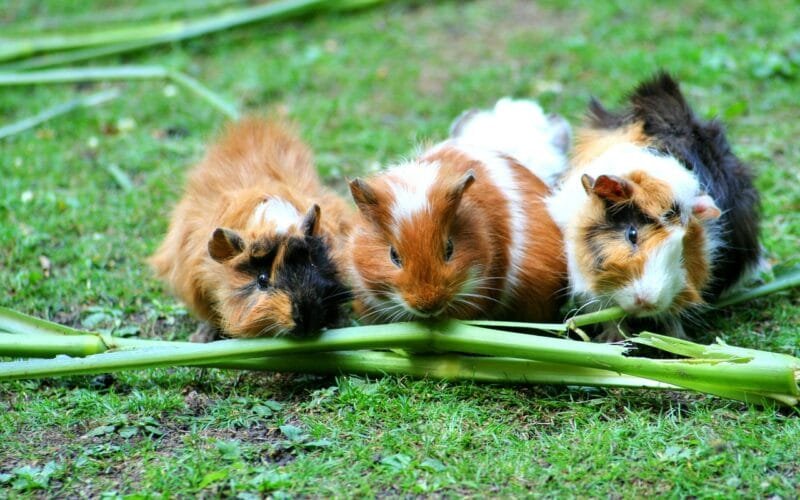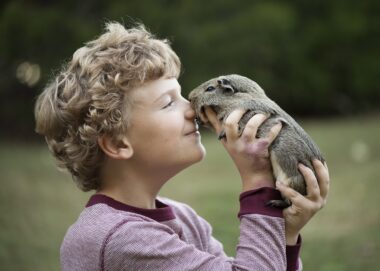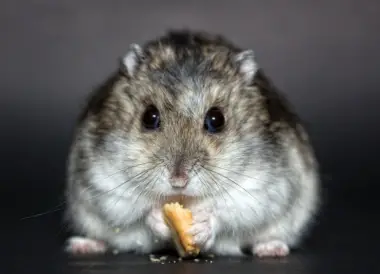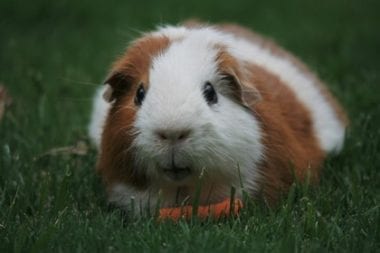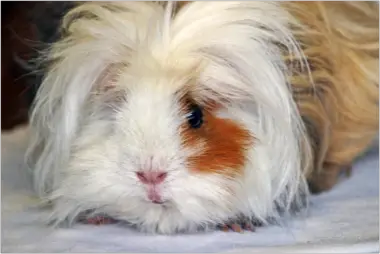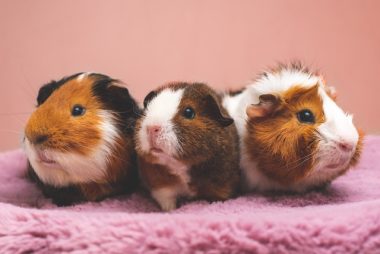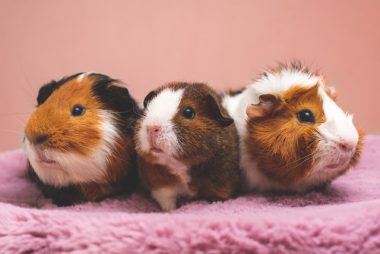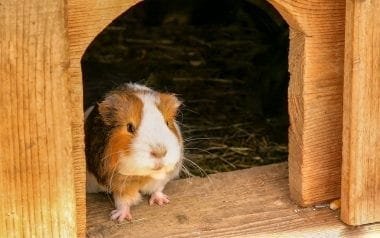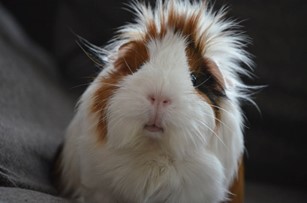What is your Guinea Pig eating?
A happy pet is a healthy pet. Every pet owner maintains a healthy diet for his pet to keep them happy and healthy. The nutrients required, the foods that can be dangerous to the breed, nutrient deprivation that can cause diseases, are a few things to remember in every pet diet. Guinea pigs also need certain care in their diet for a healthy and long life. There are different requirements relating to diet for a guinea pig. Read further to know your guinea pig diet.
Important dietary requirements
Guinea pigs is also known as cavy, is a rodent species. Since it is a herbivore, its natural diet is grass. However, as a pet, the guinea pig diet needs special attention. A poor diet can lead to metastatic calcification, muscular dystrophy, teeth problems, vitamin deficiencies and problems with pregnancy.
Guinea pigs can be fickle eaters. It is difficult to change their eating habits after maturity which is why they don’t accept a new food. Introduce new food very slowly to your guinea pig. Hay is important to keep the guinea pig’s chewing on.
Guinea pig’s teeth grow continuously. At a point it grows till the jaw causing difficulties with eating. Sometimes a guinea can even die because of starvation due to this. You have to take care of the indefinitely growing teeth.
Guinea pigs cannot formulate Vitamin C within their body. But, their body needs the nutrient. Therefore, proper diet that supplements the nutrient has to be maintained.
Gastro and diarrhea can be a problem with guinea pigs. They have a very sensitive digestive system. This is one of the reasons why the quantity and quality of guinea pig’s diet have to be taken care of.
Important foods in Guinea Pig Diet
Hay– Hay is a very important part of your guinea pig diet. About 80% of guinea pig diet must be in the form of hay. The fiber from hay is required for the proper digestion of your pet. Also, chewing hay helps curb the continuous growth of your cavy’s teeth. Guinea pigs have a habit of chewing, so keep a good supply of hay, because it will also help in controlling the teeth growth.
How to feed?
Timothy hay is a good option but alfalfa hay might have side effects. Veterinary organizations suggest that alfalfa hay can cause obesity and bladder stones in an adult cavy. Alfalfa hay could be given to pregnant or young guinea pigs, but not in the case of adult guinea pigs. Always choose fresh, clean and green hay. Do not pick yellow and hard hay.

Fruits and Vegetables- guinea pigs need one cup of fruits and vegetables per day. Some vegetable options are:
– Carrots
– Romaine lettuce (skip iceberg lettuce)
– Peas
– Spinach
– Kale
– Broccoli spears
– Tomatoes (don’t give the leaves or stem)
– Artichokes
– Green and red bell peppers
– Other dark green vegetables
Fruits also complete the vitamin C requirement for a guinea pig. Though they aren’t very fond of fruits, they do feed on some.
– Oranges
– Peaches
– Strawberries
– Kiwi
– Papaya
– Cucumbers
– Blueberries
– Pears
– Apples
How to feed?
1. Don’t give them too much calcium. It can cause bladder stones. Use parsley, spinach and kale less often.
2. Vegetables like tomatoes can be acidic or can even cause sores. So it is better to limit such vegetables to once or twice a week.
3. Vegetables like beetroots and forages like dandelion or clover leaves must be given occasionally.
4. Wash the fruits and vegetables thoroughly so that the pesticides are completely removed.
5. The fruits and vegetables should not be served cold to the cavy. They should be fresh and mold-free.
6. Don’t overfeed vegetables and fruits since guinea pigs are always hungry. This does not apply to hay. Hay should always be available.
Pellets– to give an ideal dosage of vitamin C and other essential nutrients, commercial food can be included in the guinea pig diet. These pellets are specially formulated to balance the nutrients in the guinea pig diet. But, pellets have to be fed with care. Choose the ones that are tested and approved. Also, take care of the feeding instructions.
How to feed?
While giving your cavy pellets, keep in mind that pellets are high energy foods.
1. Feed one-eighth cup each day to make up for other nutrients in the diet.
2. Pellets that supplement Vitamin C are good.
3. Cut the colorful feeds with sugar and seeds.
4. Make sure pellets are timothy hay pellets and not alfalfa-based except for pregnant guinea pigs or guinea under 6 months.
5. Do not use pellets made for rabbits. Rabbits and guinea pigs have different dietary requirements.
Treats– treats and chews are fun for your pet. Treats can be in the form of fruits or commercial treats. When picking up commercially produced treats choose the healthy ones. Chews are loved by guinea pigs. Since their teeth grow continuously, a fun way to chew can be by introducing sticks, balls, blocks, toys and treats. Guinea pigs desire salt hence, there is another treat- animal salt lick that is mineral-rich and a healthy treat to satisfy salt desire.
How to feed?
Though commercial treats are a good option, you must try to avoid them. They might not be as good for your cavy. Use carrot sticks or apples instead.
Cecotropes– If you did not have a guinea pig as a pet earlier, you would probably be amused to know what is cecotropes and how does it connect to the guinea pig diet. Cecotropes are caecal pellets or faeces, which are the product of cecum, a part of the digestive system in animals. Guinea pigs consume these soft pellets (not entirely but few) that recycle Vitamin B, fiber and bacteria needed for good digestion. Though it may seem weird, you should not stop your cavy from feeding on cecotropes.
Whatever is remaining in your pet’s cage has to be removed otherwise it will make the cage dirty.
Foods that are dangerous for guinea pigs
Certain foods can be poisonous for your guinea pig. Plants, for example, Bracken, Speedwell, may weed, Ragwort, Toadflax, Wild celery, Bryony, hellebore, foxglove, Buttercup, Charlock, Privet and Monkshood can be poisonous. The oak leaves and the ivy tree leaves are also poisonous. If you plan to leave your guinea pig in the lawn for a while, make sure he doesn’t feed on to these plants.
Foods to avoid in your guinea pig’s diet are:
– Chocolates
– Tulips
– Onions
– Mushroom
– Nuts
– Avocado
– Peanut butter
– Rhubarb
– Cabbage
– Bok Choy
– Dairy products
– Seeds
– Potatoes
– Iceberg lettuce
– Garlic
– Grapes
– Raisins
– Coconut
– Corn kernels
– Meat
– Bread
Certain foods can be high in fat or sugar, some have no nutritional value, few can cause choking hazards or bloat. Therefore, it is necessary to keep these foods away from a cavy’s diet.
Here is a sample of Natural-Ingredient Diet Used for Guinea Pig Breeding Colonies at the National Institutes of Health.
Ingredient
Amount, g/kg
Alfalfa meal (17% protein) 350.0
Soybean meal (49% protein) 120.0
Ground whole oats 252.5
Ground whole wheat 236.0
Soybean oil 15.0
Dicalcium phosphate 5.0
Calcium carbonate 10.0
Salt 7.5
Mineral and vitamin premixes 4.0
Basics of feeding your guinea pig
Now that you know what to include in your guinea pig diet, there are a few other basics you need to remember.
– Your cavy needs water at all times. So keep a freshwater bottle within the cage. If there are algae growth, clean the bottle with vinegar and fill it again. Without water, your cavy will get sick.
– Adjust the quantity of food depending on your pet’s weight. A guinea pig should not be overweight or underweight. The quantity of food also depends on the age, health and lifestyle of the cavy.
– The food that the cavy hasn’t eaten by your guinea pig has to be removed from their cage. If they have not eaten it for so long, they won’t eat it. Stale food will mess the cage.
– Guinea pigs have high chances of attracting scurvy because of low Vitamin C levels. In case you are using supplements, take care you don’t mix them with water. Your cavy might stop drinking water altogether.
– Your cavy should have an intake of 150ml of water each day.
– Feed your cavy two times a day. Once in the morning and once in the evening. Let the feeding be consistent.
– Be careful while introducing new foods. Sudden changes in diet can cause diarrhea in them.
To give a healthy and happy lifestyle to your guinea pig, a proper guinea pig diet has to be maintained. A guinea pig’s life cycle is about 4 to 5 years. But, it can live up to 8 years. All you have to do is take care of his dietary requirements and give him love. Give your pet fresh food and water. Adjust the quantity of food needed and include the nutrients necessary for his healthy living. Keep in mind the foods that can be dangerous for your pet’s health and make sure your guinea pig doesn’t have them. A healthy pet is a happy pet.
